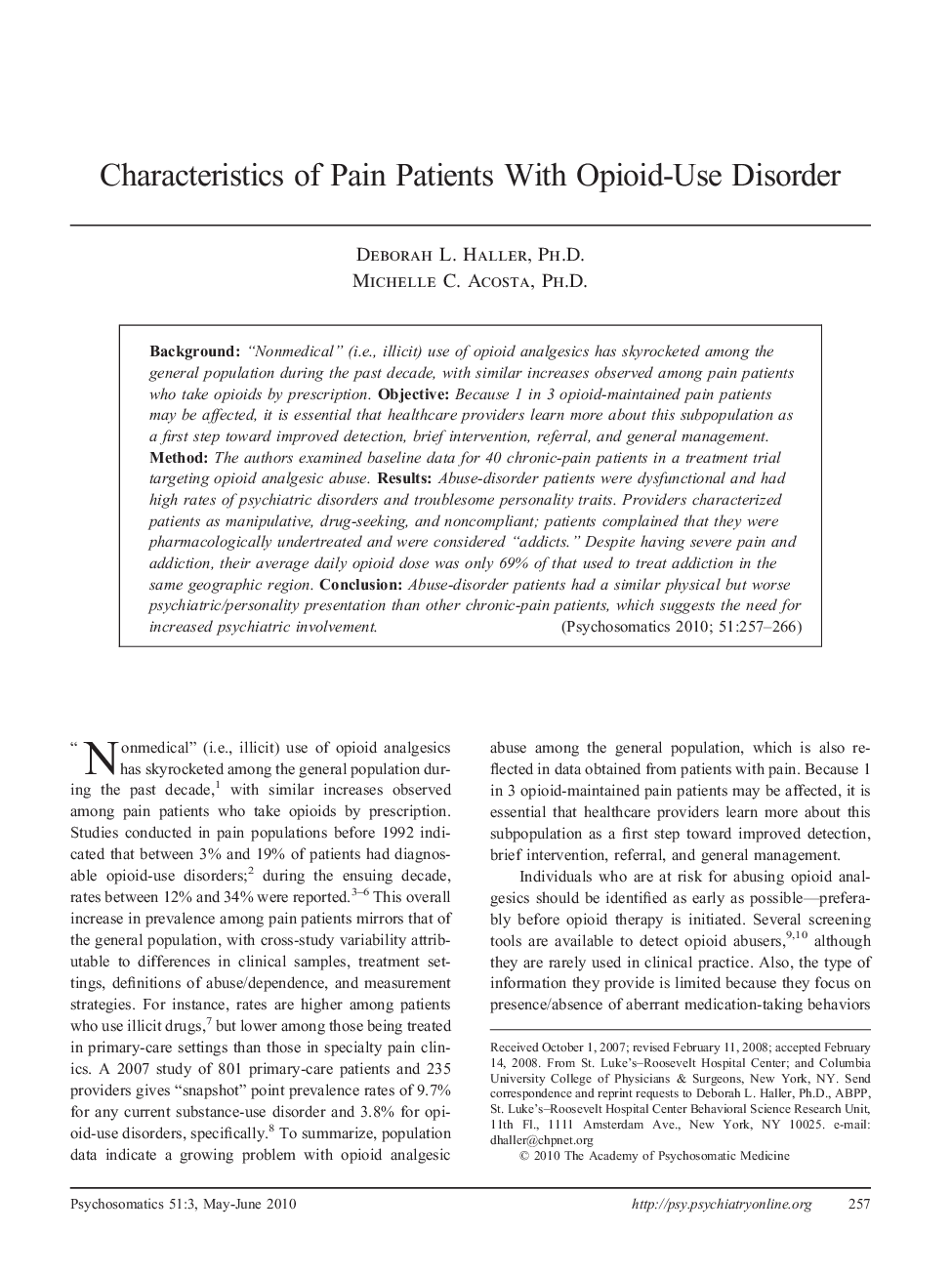| کد مقاله | کد نشریه | سال انتشار | مقاله انگلیسی | نسخه تمام متن |
|---|---|---|---|---|
| 339351 | 548072 | 2010 | 10 صفحه PDF | دانلود رایگان |

Background“Nonmedical” (i.e., illicit) use of opioid analgesics has skyrocketed among the general population during the past decade, with similar increases observed among pain patients who take opioids by prescription.ObjectiveBecause 1 in 3 opioid-maintained pain patients may be affected, it is essential that healthcare providers learn more about this subpopulation as a first step toward improved detection, brief intervention, referral, and general management.MethodThe authors examined baseline data for 40 chronic-pain patients in a treatment trial targeting opioid analgesic abuse.ResultsAbuse-disorder patients were dysfunctional and had high rates of psychiatric disorders and troublesome personality traits. Providers characterized patients as manipulative, drug-seeking, and noncompliant; patients complained that they were pharmacologically undertreated and were considered “addicts.” Despite having severe pain and addiction, their average daily opioid dose was only 69% of that used to treat addiction in the same geographic region.ConclusionAbuse-disorder patients had a similar physical but worse psychiatric/personality presentation than other chronic-pain patients, which suggests the need for increased psychiatric involvement.
Journal: Psychosomatics - Volume 51, Issue 3, May–June 2010, Pages 257–266